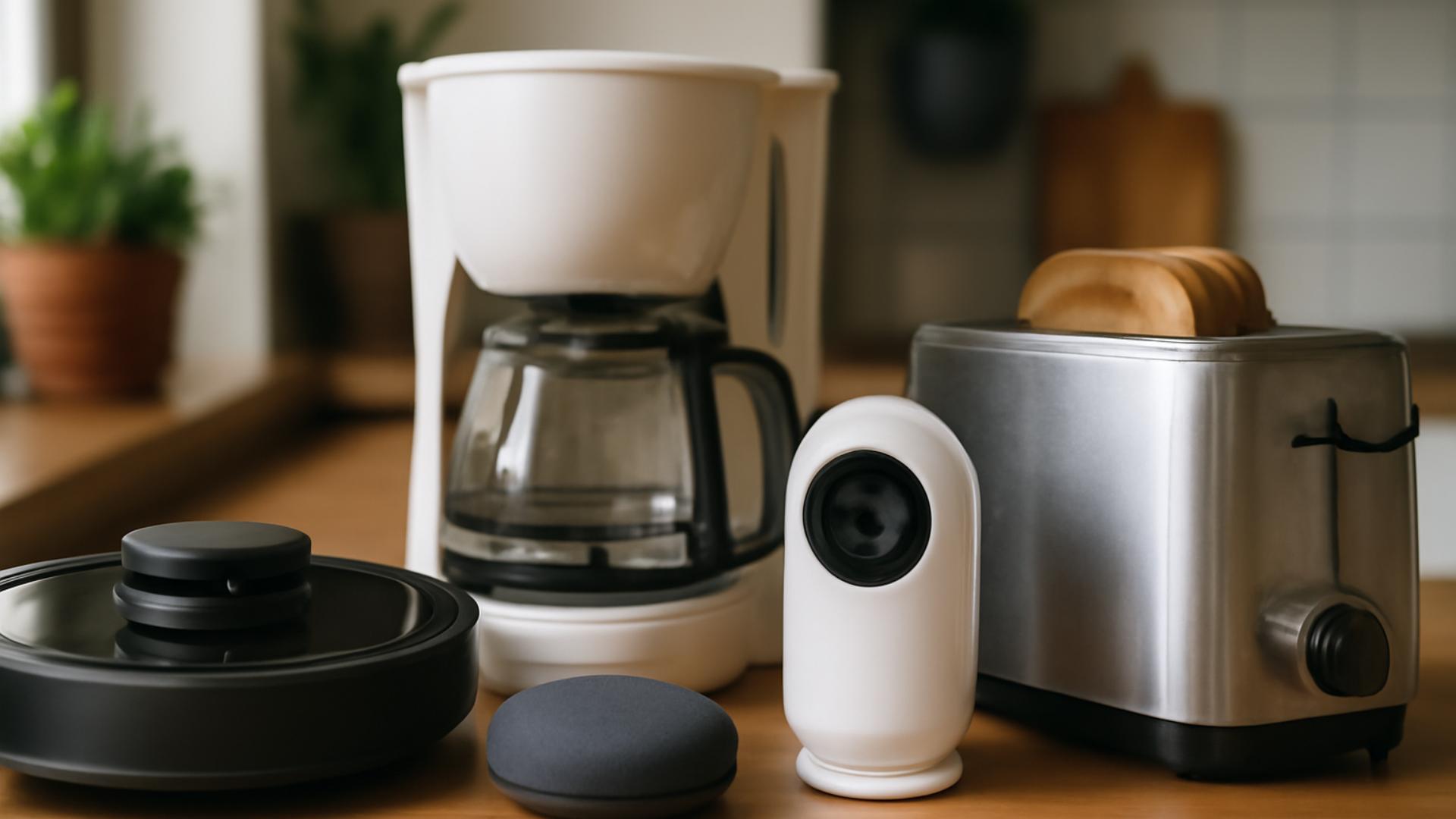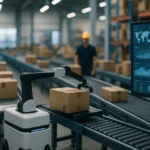In the midst of our fast-paced modern world, automation has emerged as a powerful catalyst for transformation across numerous sectors. From the mundane to the complex, the integration of automated systems is reshaping how we interact with technology and streamline tasks. As businesses strive to bolster efficiency and optimize processes, the role of automation becomes increasingly pivotal. In this article, we delve into five remarkable examples of automation in everyday products, revealing their underlying impact on convenience and productivity. Whether you’re an early adopter or a curious observer, these examples will illustrate how automation is quietly revolutionizing our world.
Smart Home Devices: Your Personal Automation Assistants
The evolution of the smart home reflects a significant shift towards embracing automation in our daily lives. Modern smart devices are finely tuned to improve our home environments, making them a quintessential part of our routine.
Integration and Control
Smart home devices operate through interconnected systems that facilitate seamless control over household appliances. From adjusting the thermostat and controlling lights to security monitoring, these devices are designed to centralize home management, offering efficiency and convenience.
Voice-Activated Assistants
With advancements in voice recognition technology, devices like Amazon Echo and Google Home act as virtual assistants, capable of understanding and executing a myriad of commands. They simplify tasks, schedule reminders, and even control other smart devices through natural language processing.
Automation in Action
Consider lighting systems that automatically adjust brightness based on the time of day or presence sensors that activate your security cameras. These are not just visions of the future; they’re available in the present, creating smarter and more efficient living environments.
Automated Vehicles: Redefining Transportation
The automotive industry is undergoing a paradigm shift with the emergence of automated vehicles. Once the stuff of science fiction, self-driving cars are paving the way for a future where transportation is both smart and safe.
Data-Driven Navigation
Relying on powerful data analytics and artificial intelligence, automated vehicles process vast amounts of information in real-time. This allows for precise navigation, obstacle detection, and adaptive cruise control, thereby mitigating human error.
Safety and Efficiency
Automation in vehicles reduces the risks associated with human limitations like fatigue or distracted driving. By employing advanced sensors and machine learning algorithms, these cars promise a reduction in accidents and traffic congestion, ultimately reshaping urban mobility.
The Road Ahead
While fully autonomous vehicles are still refining their capabilities, systems like Tesla’s Autopilot offer a glimpse into the future. These innovations are part of a broader move toward sustainable, automated transportation solutions that prioritize safety and efficiency.
{image_content}
Robotic Process Automation in Business Operations
In the realm of business, Robotic Process Automation (RPA) stands out as a transformative force, altering how companies handle routine tasks and data management.
Streamlining Processes
RPA utilizes software robots to automate repetitive tasks such as data entry, processing transactions, and responding to simple customer inquiries. By doing so, businesses can maintain higher accuracy levels and speed without the need for continuous human intervention.
Increased Efficiency
Automating these processes allows human workers to focus on more complex, value-added tasks. This not only boosts overall productivity but also enhances employee satisfaction by reducing mundane workload.
Real-World Applications
Consider the finance sector, where RPA is used to manage accounts payable and receivable. Similarly, in customer service, chatbots handle initial interactions with customers, ensuring prompt responses and freeing up human agents for more intricate inquiries.
Automated Manufacturing: The Future of Production
The production landscape is being revolutionized by automation technologies that enable manufacturing processes to become more precise and efficient.
Automation and Control
Modern manufacturing employs robotics for tasks ranging from assembly to quality control. These automated systems ensure consistency, reduce errors, and increase production speed, thereby meeting the demands of a competitive market.
Smart Production Lines
Using the Internet of Things (IoT), automated factories can monitor equipment performance in real-time, predicting maintenance needs and avoiding costly downtimes. This data-driven approach leads to smarter production cycles.
Examples of Excellence
Automotive giants like BMW and Toyota have embraced automation to produce vehicles with unparalleled precision. These systems are designed to automate complex tasks while maintaining high standards of quality and innovation.
Healthcare Automation: Enhancing Patient Care
In the healthcare sector, automation is making significant strides, enhancing patient outcomes and streamlining administrative processes.
Patient Monitoring and Data Analysis
Automated systems are utilized for continuous patient monitoring, utilizing sensors to track vital signs and provide real-time alerts to healthcare professionals. This ensures timely interventions and personalized care.
Administrative Efficiency
The integration of automation in administrative tasks such as scheduling, billing, and inventory control optimizes healthcare facilities’ operations. Reducing paperwork and manual data entry improves overall efficiency, allowing for more focus on patient care.
A Glimpse into the Future
Robotic surgery is another frontier in automated healthcare, offering high precision and minimally invasive solutions. As these technologies advance, they promise to enhance the quality and accessibility of healthcare services globally.
As we stand at the crossroads of technological advancement, automation continues to redefine the contours of our existence. The examples discussed underscore a growing trend where data-driven systems and smart technologies permeate every facet of life. The promise of automation lies not just in enhancing efficiency but also in liberating human potential to pursue creativity and innovation. As we shape tomorrow, these automated solutions guide us toward a future of endless possibilities, bridging the gap between imagination and reality.
FAQ
What is home automation and how does it work?
Home automation refers to the use of technology to control and monitor various household systems and appliances remotely. It typically involves the integration of devices through a central hub or app, allowing users to manage lighting, security, heating, and more from their smartphone or computer.
How do smart thermostats contribute to energy saving?
Smart thermostats use advanced algorithms and sensors to learn your schedule and temperature preferences. By adjusting the heating and cooling systems based on occupancy and weather conditions, they help optimize energy usage, leading to reduced utility bills.
What are the benefits of using automated lighting systems?
Automated lighting systems offer convenience and energy efficiency. Users can schedule lights to turn on or off at specific times, adjust brightness remotely, and even set up motion sensors to activate lights only when someone is present, reducing unnecessary electricity consumption.
Can robotic vacuum cleaners really replace manual cleaning?
Robotic vacuum cleaners are designed to autonomously clean floors, effectively removing dust, dirt, and debris. They are equipped with sensors to navigate around obstacles and can be scheduled to clean at specific times. While they are highly convenient for regular maintenance, manual cleaning may still be needed for deep cleaning tasks.
What role do smart speakers play in home automation?
Smart speakers act as voice-activated assistants that control other smart devices in your home. They allow users to perform tasks such as playing music, setting reminders, controlling smart lights or thermostats, and accessing information hands-free through voice commands.



